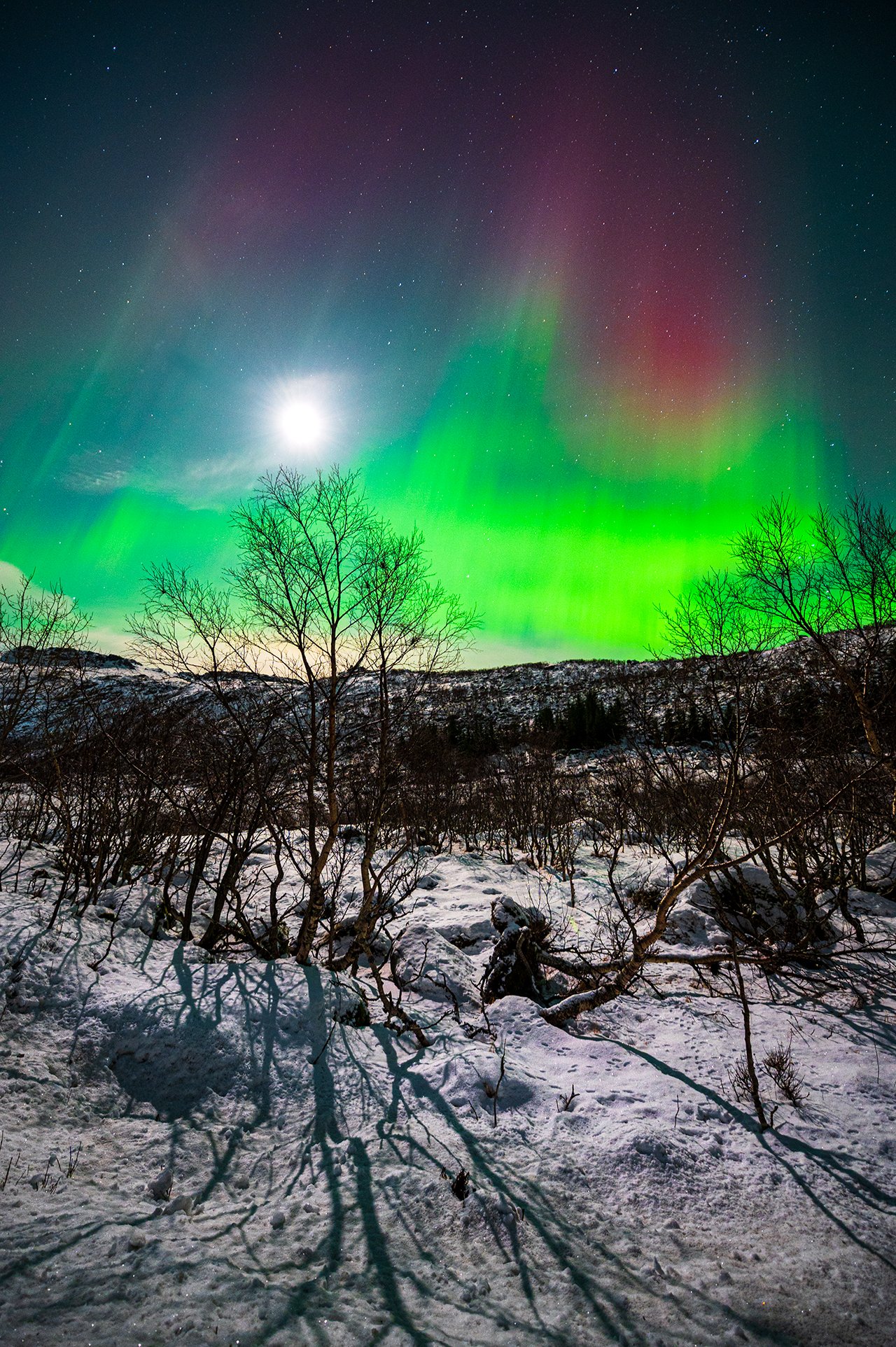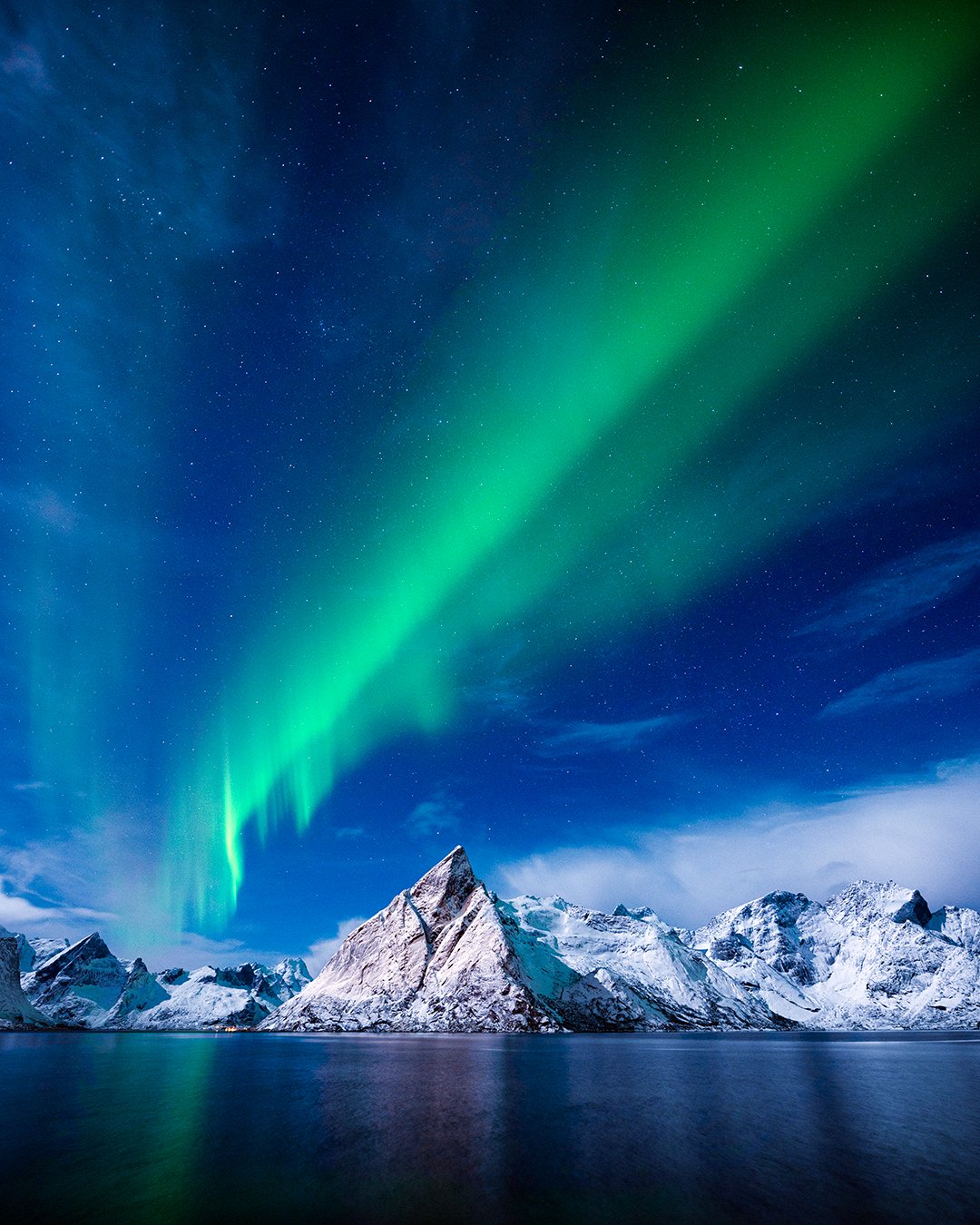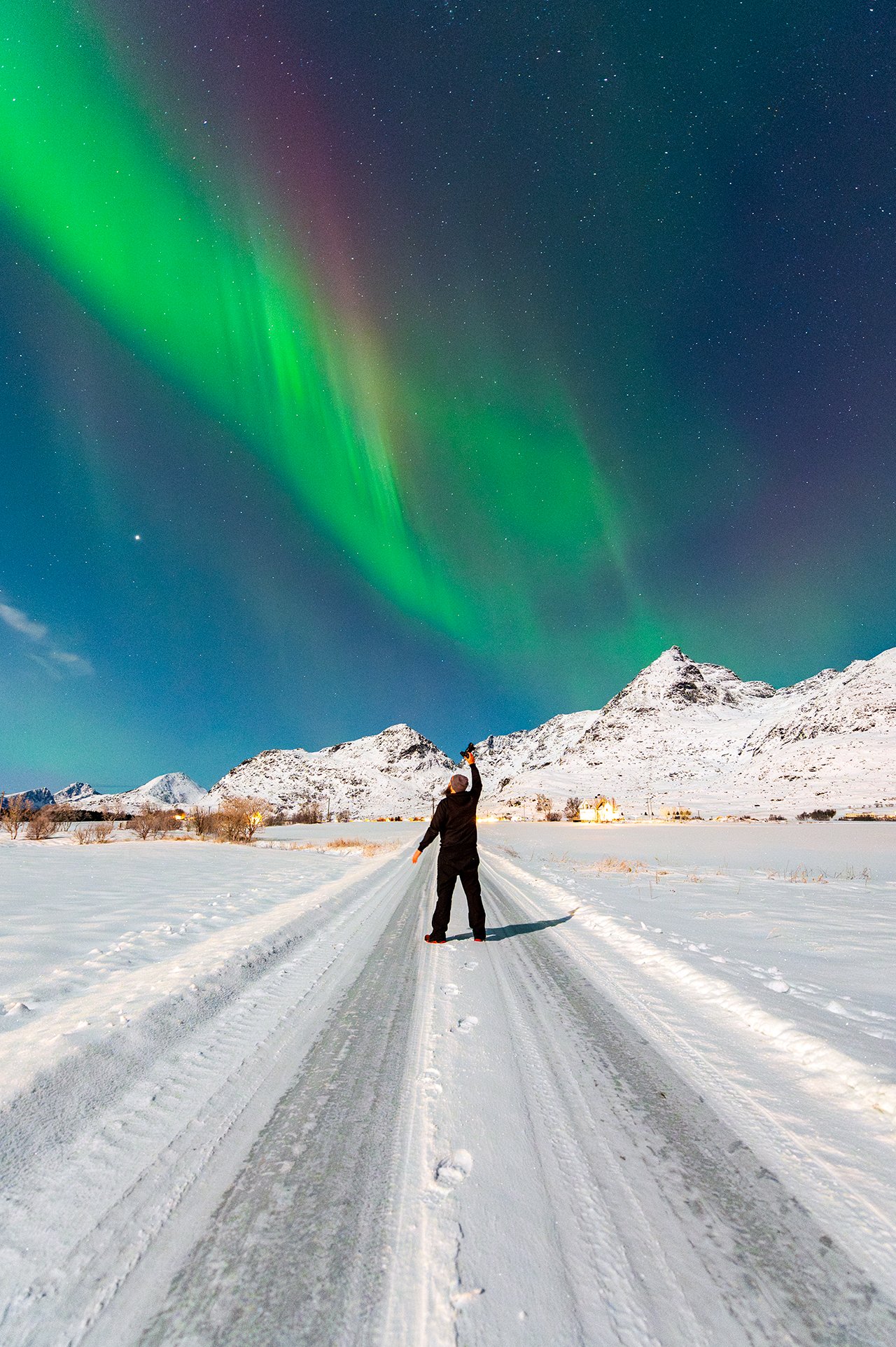Northern Lights Versus The Moon
Moonlight and Aurora Photography: A Harmonious Duo
When it comes to capturing the beauty of the Northern or Southern Lights, many aspiring photographers are often told to seek out the darkest skies possible. The advice typically suggests avoiding moonlight, with the assumption that it will diminish the visibility of the aurora or interfere with the quality of photos. However, this common belief is more myth than fact. In reality, moonlight can actually enhance your aurora experience, both visually and photographically. Here's why moonlight and auroras can be a perfect pairing.
Moonlight Adds Depth and Dimension to Your Photos
One of the most compelling reasons not to shy away from moonlit nights is the way the light can add depth and context to your aurora photographs. Without any moonlight, the landscape beneath the aurora can be shrouded in darkness, resulting in a flat and featureless foreground. Moonlight, even a sliver of it, illuminates the surrounding scenery, whether it’s a snowy field, a mountain range, or a forest. This added light helps create a more dynamic and compelling composition, where the ethereal lights of the aurora dance above a beautifully lit landscape.
The Aurora Remains Visible Under Moonlight
Contrary to popular belief, moonlight does not wash out the aurora to the point where it's no longer visible. While it’s true that very faint auroras might be harder to spot under a bright full moon, most moderate to strong auroras remain clearly visible. In fact, the brightness of the aurora can often overpower the moonlight, allowing the colours and movements to be easily distinguished. If you’re already under a clear, dark sky, the addition of moonlight won’t significantly diminish the aurora’s impact.
Easier Aurora Spotting for Beginners
For those new to aurora spotting, a bit of moonlight can actually be helpful. The light can make it easier to navigate in the dark, reducing the risk of stumbling over obstacles or losing your way in unfamiliar terrain. Additionally, the subtle illumination can help in identifying cloud cover and other weather conditions that might affect your viewing experience.
Moreover, moonlight can enhance the contrast between the aurora and the sky, making the lights easier to spot. The moon’s glow adds a soft backdrop against which the aurora’s dynamic colours can stand out, making them easier to discern for the untrained eye.
Balanced Exposure in Photography
Photographers often struggle to balance exposure between a bright aurora and a dark foreground. Moonlight naturally illuminates the landscape, allowing for a more balanced exposure. This means you can capture the brilliance of the aurora without sacrificing detail in the foreground. For example, when shooting with a full or nearly full moon, you can achieve images where the landscape is richly detailed, complementing the vivid aurora above. This balance can make for more visually stunning and professionally polished photographs.
The Magic of Moonlit Auroras
Moonlit auroras offer a unique and enchanting experience that dark, moonless nights simply can't replicate. The combination of moonlight and auroras creates a surreal atmosphere, where the entire landscape glows under the celestial light. The aurora, with its vibrant colours, seems even more magical against a softly lit earth. The interplay between the cool tones of the moonlight and the vivid hues of the aurora can lead to breathtaking scenes that are impossible to capture under a new moon.
Tips for Shooting Auroras Under Moonlight
- Use a Lower ISO: Since the moonlight will naturally brighten the scene, you can lower your ISO, which reduces noise in your images and results in clearer, sharper photos.
- Adjust Exposure Time: You might need to reduce your exposure time slightly to avoid overexposing the foreground, especially during a full moon.
- Include the Landscape: Make the most of the moonlit environment by including interesting foreground elements in your composition, such as trees, mountains, or water bodies.
- Experiment with White Balance: Moonlight has a cooler tone compared to sunlight, so adjusting your white balance can help achieve the desired warmth or coolness in your shots.
Moonlight and auroras are not adversaries; they can coexist beautifully. Whether you're a seasoned aurora chaser or a novice hoping to capture your first aurora photo, don’t let the presence of the moon deter you. Embrace the moonlight, and you’ll discover that it adds a whole new dimension to your aurora photography and viewing experience. The next time you’re planning a night under the lights, consider letting the moonlight guide your way—it might just lead to some of your most memorable and magical aurora moments.
Join us in Lofoten for the Ultimate Aurora Hunt with a professional photographer guide and you’ll get expert advice to take your own photos of the northern lights, and souvenir photos to savour those memories.




